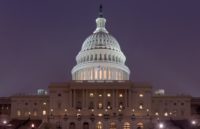

As the partial federal shutdown continued, President Obama traveled to a Maryland construction company on Oct. 3 and criticized House Speaker John Boehner (R-Ohio) for not bringing a Senate-approved stopgap spending bill up for a floor vote. Boehner repeatedly called on Obama and other Democrats to negotiate to end the shutdown and raise the U.S. debt limit.
Meanwhile, new impacts on construction were emerging. A bright note was Defense Secretary Chuck Hagel's Oct. 5 news that the Pentagon was recalling about 90% of its 350,000 furloughed civilian employees. He used an expanded interpretation of the Pay Our Military Act, signed on Sept. 30. The Naval Facilities Engineering Command, as of Oct. 7, was able to recall most of its 18,000 civilian workers, says spokeswoman Virginia Bueno.
But Hagel's directive said Army Corps of Engineers civil-works employees would still be on the furloughed list. Jim Walker, American Association of Port Authorities director of navigation policy and legislation, says pre-2014 funds permitted the Corps to keep most civil-works staff on the job for the shutdown's first week. As carryover aid fell, furloughs began and more are expected, he says.
Senate Environment and Public Works Committee Chairman Barbara Boxer (D-Calif.) says Corps furloughs have hampered approvals of construction permits. She also says the shutdown led the Environmental Protection Agency to furlough 93% of its workers, including those doing highway-project reviews. Pete Ruane, American Road & Transportation Builders Association CEO, says layoffs at EPA will slow those studies. He says 129 road and bridge jobs were under environmental review as of Aug. 22. "They're monster projects," he says.
The National Association of Clean Water Agencies hasn't yet seen "a pinch" in EPA state revolving fund aid for wastewater treatment plants, says Hannah Mellman, legislative affairs manager. But she adds, "If this plays out for two or three weeks, that could be a different story."
Andrew Goldberg, American Institute of Architects managing director for government relations, says some buildings projects with obligated funds are active, but a long shutdown may harm non-federal design and construction, too. He says, "For an industry that is still getting back on its feet, this could ... cause a real backward slide."




